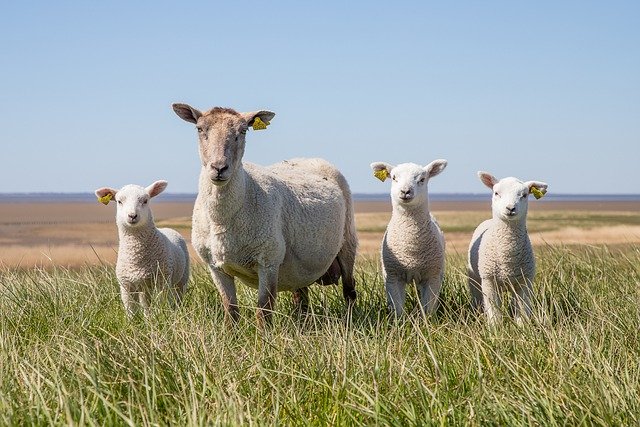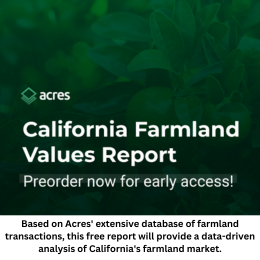July 29, 2020
By Lynda Kiernan, Global AgInvesting Media
A new study – the 2020 State of the Industry Report – released by Agribusiness Australia, presents an examination of the opportunities for the industry to gain investment and increase growth toward its target of reaching A$100 million in farm gate production value by 2030.
Ag is the fastest growing sector in the Australian economy, and is second only to mining in its contribution of more than $63 billion, or 2.3 percent of GDP for 2016/17, according to ACIL Allen Consulting in its report, Agriculture – a $100B Sector by 2030?
In 2017, the National Farmers’ Federation (NFF) made an ambitious announcement that it foresaw the potential for the country’s ag sector to achieve the benchmark of A$100 billion in farm gate output by 2030, given the proper actions taken to increase investment, advance technology development and adoption, strengthen R&D, improve infrastructure, and grow access to and development of markets.
However, Agribusiness Australia has found that the country is behind in investment, and lagging in productivity and research, setting farmers 6.3 percent below the growth benchmark needed to reach the $100 billion goal by 2030, and placing them in the position of even losing rank as a leading global food and fiber producing country.
“Driven by decreasing productivity and increasing global competition, the Australian agriculture sector is continuing to lose market share in global agriculture exports,” stated the report, which went on to note how Australia is under threat of losing market share to Brazil, and the Black Sea region.
“There has been a considerable slowdown in Australia’s productivity since the 1970s when it peaked at almost 2 per cent across all broadacre crops.”
“Australian agricultural productivity growth rates have effectively been close to 1 per cent in the decades that followed, while the agricultural productivity growth rates of other comparable nations have been in the range of 1-3 per cent per annum.”
The report also outlines that if the sector maintained at the current volume trend with no increase to price, the value would reach A$80 billion by 2030. If the sector remained at its current volume, but relied on past price increase trends, the industry would reach A$88 billion by 2030 – indicating a gap of A$12 billion to reach its goal.
These findings were discussed at a virtual summit that gathered leadership from more than 50 of the largest public and private companies, such as Paraway Pastoral, S. Kidman & Co. AACo, Bayer, Cargill, Syngenta, Glencore, Elders, Bega Cheese, GrainCorp, CBH co-op, and Incitec Pivot, among others.
Mark Allison, president of Agribusiness Australia and CEO and managing director of Elders, said that the scenario required an industry-wide approach, according to Beef Central, saying that the focus had to be on the country’s farms, and the entire value chain.
“The bottom line is that for every dollar that is created on-farm, two are created through the supply chain,” said Allison.
“That is why we need to clarify, validate, and build on the current farmgate target to encompass a $300 billion value chain target, driving innovation and efficiency that benefits the entire industry.”
Challenging climatic conditions including drought and bushfires were another factor cited by Agribusiness Australia as contributing to the country’s difficulty, and being a reason that domestic investors are reluctant just when $250 billion in investment will be needed to reach its goal.
“There are three areas to attract capital in,” noted the report, “operational excellence, financial management, and governance. The Australian agricultural sector succeeds in achieving the first two areas however, there needs to be improved capability in the governances of the sector to entice greater capital investment.”
It also asks, “How does the Australian agriculture sector source and encourage greater international investment throughout all aspects of the supply chain?”
Other areas of opportunity for the sector addressed by the report include ESG, risk and sustainability; transportation and infrastructure; agtech and innovation; the ability to secure global trade deals; commodities versus niche markets, the untapped opportunity present in fragmented markets; and attracting the right workforce.
“Above all, we need to bring primary producers, corporations, downstream organizations, representational organizations, RDC’s, CSIRO, universities, State and Federal Governments together to develop this long-term, detailed, directed, outcomes-based transformational plan, said Allison.
“That’s what today is all about, reframing the future of the sector.”
– Lynda Kiernan is editor with GAI Media, and is managing editor and daily contributor for Global AgInvesting’s AgInvesting Weekly News and Agtech Intel News, and HighQuest Group’s Oilseed & Grain News. She is also a contributor to the GAI Gazette. She can be reached at lkiernan@globalaginvesting.com

Let GAI News inform your engagement in the agriculture sector.
GAI News provides crucial and timely news and insight to help you stay ahead of critical agricultural trends through free delivery of two weekly newsletters, Ag Investing Weekly and AgTech Intel.




